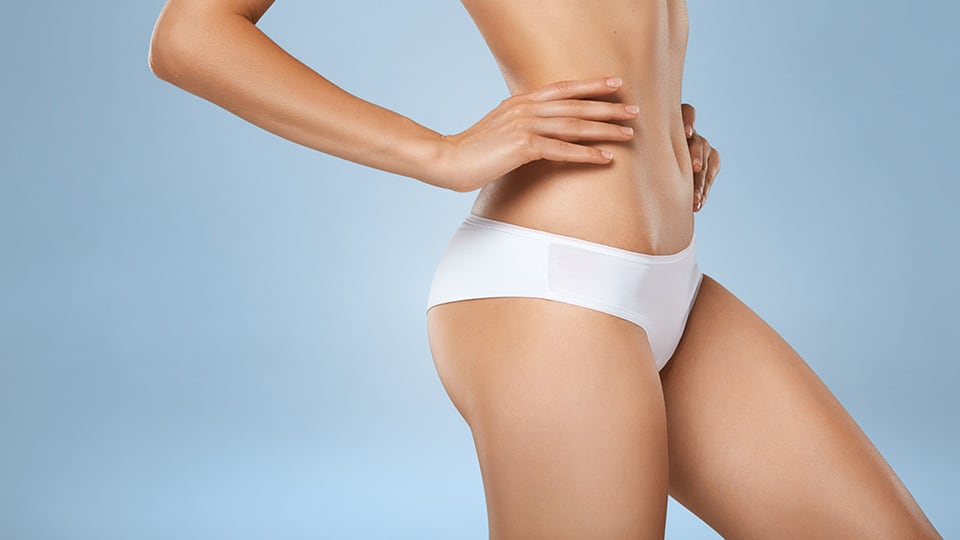Thigh lift surgery is done by James M. Shaw, MD to remove excess skin and tighten the upper thigh area. The inner thigh is most commonly addressed. This is because the inner thigh skin is thinner and less elastic than the rest of the thigh skin. For most patients, liposuction is done as part of the surgery in order to remove excess or uneven fat deposits before removing the excess skin.
The most common technique is to remove a crescent-shaped portion of skin on the upper inner thigh. This allows for removal of the stretched skin and leaves a scar that is almost in the groin crease where it is not very noticeable.
A more aggressive approach may be necessary for patients after substantial weight loss. There may be loose skin much farther down the inner thigh than the upper crescent excision will address. For these patients, the skin removed is V-shaped and there is a resulting scar going up and down on the inner thigh.
Other approaches can be done as well, depending on each patient’s particular situation. The trade-off is always managing how much skin can be removed vs. how long and noticeable the resulting scars will be.
Drains may be necessary. This is especially true in patients who have had weight loss surgeries.
The discomfort after thigh lift surgery is typically easily managed with small doses of pain medication and cold packs. Usually if there is more discomfort, it is related to increased activity levels. It is best to stay home and avoid any strenuous activity for the first six or seven days. Vigorous exercise should be avoided for the first month or so. Showering is encouraged beginning the day after surgery. But submerging the incisions in a tub or pool should be avoided during the first month or so.
